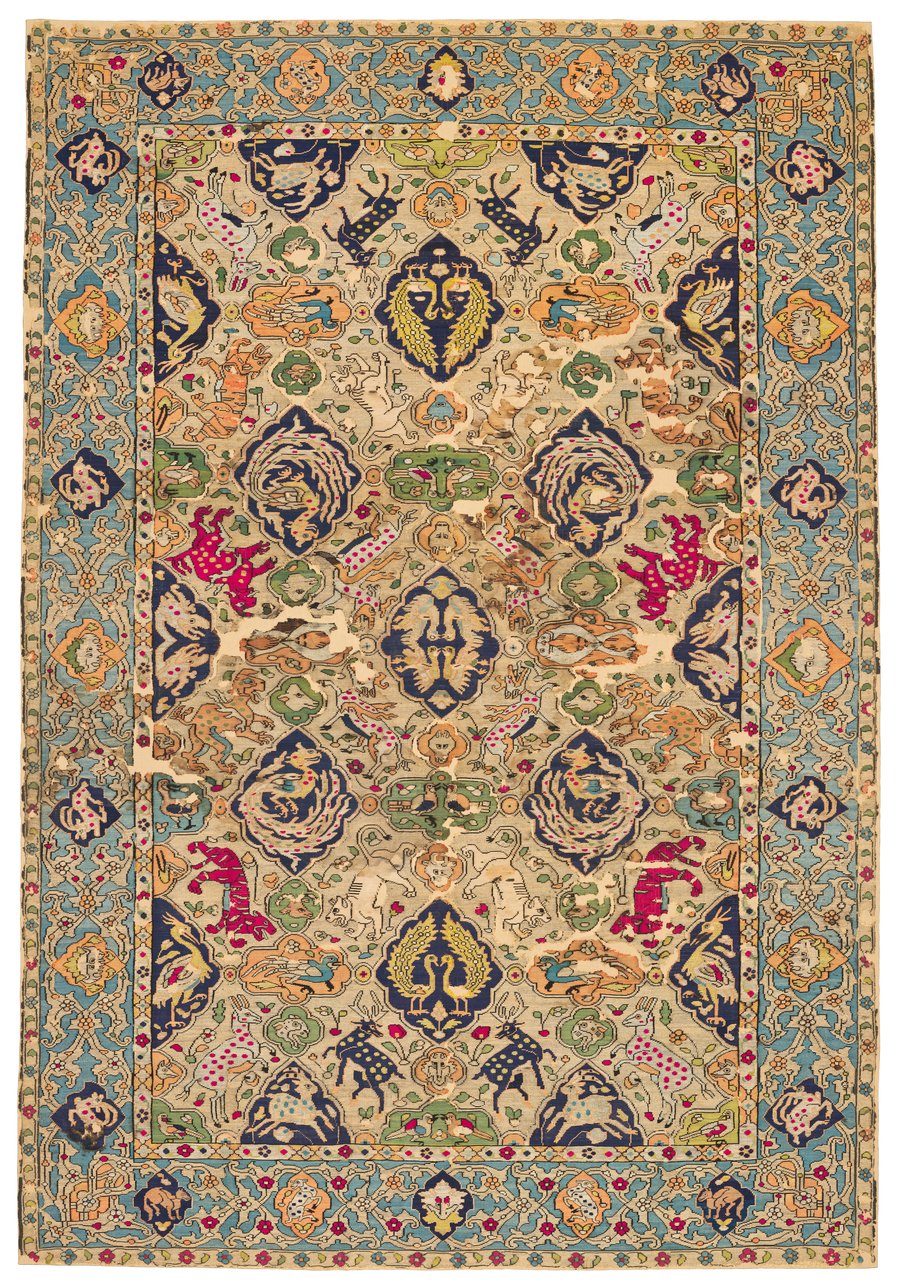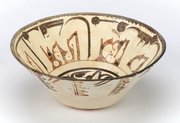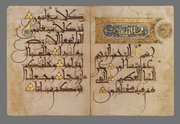
'Franchetti Tapestry'
Museum of Islamic Art
- Title:
- 'Franchetti Tapestry'
- Production place:
- Kashan
- Date:
- 1575 - 1599
- Period:
- Safavid
- Title:
- 'Franchetti Tapestry'
- Production place:
- Kashan
- Date:
- 1575 - 1599
- Period:
- Safavid
- Material:
- Silk, Metal
- Technique:
- Weaving
- Dimensions:
- 220 × 151
The use of designs including animals and mythical creatures was developed in the eastern Iranian lands in the 9th century AH / 15th century CE and constituted a typical decorative scheme during the Safavid period. This tapestry features the phoenix and the qilin, both deriving from Chinese patterns. The phoenix, a winged-lion with the head of an eagle, was used in post-Mongol Iran as a central motif and merged with the image of Simurgh, a bird of divine nature that encompasses features of all existing birds. The qilin, a deer-like creature is said to appear at auspicious moments in human history. Other creatures are depicted on this tapestry: the bird of paradise, a famous bird living only in New Guinea, and the animal-head mask, an imaginary pattern used to ward off evil spirits in popular beliefs.



